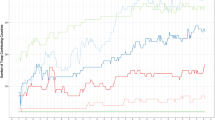Abstract
Just over a decade after the 11 September 2001 (9/11) terrorist attacks, the heads of state and government of NATO met in Chicago on 20–21 May 2012. The Chicago Summit meeting had three main issues on its agenda: Afghanistan; burden-sharing and global partnerships.2 The primary issue discussed by the heads of state and government of the alliance member states was the policy for NATO’s exit from Afghanistan by 2014. NATO’s engagement in Afghanistan has been an important yet divisive issue for the alliance for most of the past decade, and agreeing a strategy for a workable exit from that country was thus unsurprisingly the main focus of the summit. The military, political and economic commitment the alliance made to Afghanistan was not a direct result of 9/11, but the conflict in Afghanistan was. The second major issue on the summit agenda was the question of burden-sharing. Burden-sharing has been a perennial issue virtually throughout the alliance’s 63-year history, but is an issue that gained increased saliency in the 1990s, after the dissipation of the Cold War. The events in the immediate aftermath of 9/11 cast the issue in a new and harsh light, and since then military transformation has been a central pillar of NATO policy. The third main item on the Chicago Summit’s agenda was strengthening and enlarging the alliance’s global partnerships. All three of these items on the alliance’s summit agenda in Chicago are a legacy of the terrorist attacks in New York and Arlington of a decade earlier.
Yogi Berra, the American baseball player, reportedly said, ‘It’s déjà vu all over again’ when he witnessed Mickey Mantle and Roger Maris repeatedly hit back-to-back home runs in a NY Yankees’ game in the early 1960s. On who Yogi Berra was, see ‘Yogi Berra’, Wikipedia, available at: http://en.wikipedia.org/wiki/Yogi_Berra.
Access this chapter
Tax calculation will be finalised at checkout
Purchases are for personal use only
Preview
Unable to display preview. Download preview PDF.
Similar content being viewed by others
Notes
Martin A. Smith, ‘Afghanistan in Context: NATO Out-of-Area Debates in the 1990s’, Unidad de Investigacion Sobre Seguidad y Cooperacion Internacional Discussion Papers, No. 22, January, 2010, pp. 16–33.
For detailed accounts of NATO interventions in the former Yugoslavia in the 1990s, see Ivo H. Daalder, Getting to Dayton: The Making of America’s Bosnia Policy (Washington, DC: Brookings Institution Press, 2000);
Ivo H. Daalder, and Michael E. O’Hanlon, Winning Ugly: Nato’s War to Save Kosovo (Washington, DC: Brookings Institution Press, 2001);
Giovanna Bono, NATO’s ‘Peace-Enforcement’ Tasks and ‘Policy Communities’: 1990–1999 (Aldershot: Ashgate Publishing, 2003).
John E. Peters, Nora Bensahel, Stuart Johnson, Timothy Liston, and Traci Williams, European Contributions to Operation Allied Force: Implications for Transatlantic Cooperation, Santa Monica: RAND, 2001.
For a thorough analysis of what NATO did contribute, see Tom Lansford, All for One: Terrorism, NATO and the United States (Aldershot: Ashgate, 2002).
Allied Command Transformation, ‘NATO Response Force: transformational benefits’ (Norfolk, VA: Allied Command Transformation, 2009), p. 7.
Allied Command Transformation (ACT), Understanding NATO Military Transformation (Norfolk, VA: Allied Command Transformation Public Information Office, 2005).
David Yost, ‘An interview with General James L. Jones, USMC, Retired, Supreme Allied Commander Europe (SACEUR), 2003–2006’, Research Paper, No. 34 (NATO Defence College, Rome: January 2008), p. 2.
On these three states initiation of change starting in the late 1990s, see Theo Farrell and Tim Bird, ‘Innovating within Cost and Cultural Constraints: The British Approach to Military Transformation’, in Terry Terriff, Frans Osinga, and Theo Farrell (eds.), A Transformation Gap? American Innovations and European Military Change (Stanford, CA: Stanford University Press, 2010), pp. 35–58;
David Yost, ‘An interview with General James L. Jones, USMC, Retired, Supreme Allied Commander Europe (SACEUR), 2003–2006’, Research Paper, No. 34 (NATO Defence College, Rome: January 2008), p. 2.
See Bastian Giegerich and William Wallace, ‘Not Such a Soft Power: the External Deployment of European Forces’, Survival, Vol. 46 (2), 2004, pp. 163–184.
See Jens Ringsmore, ‘NATO’s Response Force: Finally Getting it Right?’, European Security, Vol. 18 (3) (September 2009), pp. 287–304.
For an analysis for the potential impact of projected European defence spending cuts on NATO’s military capabilities, see John Gordon, Stuart Johnson, F. Stephen Larrabee, and Peter A. Wilson. ‘NATO and the Challenge of Austerity’, Survival, 54 (4) (2012), pp. 121–142.
Editor information
Editors and Affiliations
Copyright information
© 2013 Terry Terriff
About this chapter
Cite this chapter
Terriff, T. (2013). ‘Déjà vu all over again’?: 11 September 2001 and NATO Military Transformation. In: Hallams, E., Ratti, L., Zyla, B. (eds) NATO beyond 9/11. New Security Challenges. Palgrave Macmillan, London. https://doi.org/10.1057/9780230391222_5
Download citation
DOI: https://doi.org/10.1057/9780230391222_5
Publisher Name: Palgrave Macmillan, London
Print ISBN: 978-1-349-35152-7
Online ISBN: 978-0-230-39122-2
eBook Packages: Palgrave Political & Intern. Studies CollectionPolitical Science and International Studies (R0)




